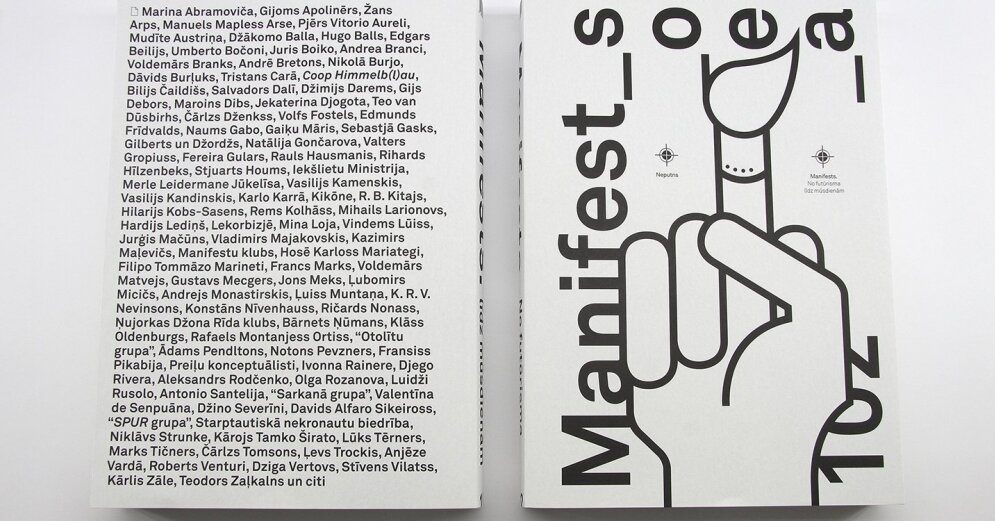Publishing House “Neputns“A selection of 20th / 21st century art manifestos has been published” Manifesto. From Futurism to the Present Day. ”It brings together 102 art manifestos from the 20th and 21st centuries.
–
–
Content will continue after the ad
Advertising
–
“I hope that this book will strengthen our love of experimental culture, as well as expand the boundaries of artistic imagination,” says Artis Ostups, a literary critic and poet. The book was designed by Armands Zelčs.
“This selection shows the way of the art manifesto as an experimental and provocative form of thinking from the beginning of the 20th century to the present day. The selection tells about how global society’s moods and ideas have changed, how different belief systems have struggled with each other. principles, “emphasizes Artis Ostups.
The book introduces a series of texts belonging to the historical avant-garde – futurism, dadaism, suprematism, constructivism and surrealism – which can be considered the beginning of the manifesto as a unique literary genre: FT Marineti’s “Founding and Manifesto of Futurism”, Valentina de Senpuano’s Ball “Manifesto for the First Night of the Dadaists”, Olga Rozanova’s “Cubism. Futurism. Supremism”, Andre Breton’s “Manifesto of Surrealism”, etc. “It is these first hooligan works that most clearly distinguish the manifesto from essays, articles, treatises and other forms of presentation,” says the author. .
The avant-garde period is followed by post-war and modern manifestos that seem less utopian and aggressive than their predecessors. To name a few: George (George) Machoon ‘s “Fluxus Manifesto”, Gustav Mecger’ s “Self – Destructive Art”, Gilbert and George ‘s “What Our Art Means”, Billy Chaildish and Charles Thomson’ s “Remodernist Manifesto”, Adam Pendleton ‘s “Black Dada.”
Manifestos of Latvian artists and writers – Niklāvs Strunke’s “New Art”, Teodors Zaļkalns’ “Our Art”, Hardijs Lediņš and Juris Boiko’s “Approximate Art Manifesto”, Preiļi Conceptualist Manifesto, etc.
For each of the selected manifestos, a small annotation is provided, in which the circumstances of its creation, the author or authors are announced.
The scientific editor of the book, art historian Stella Pelše, points out: “Although these manifesto texts are not difficult to find in the original languages, it is also important to develop and clarify the relevant terminology of styles, directions and other phenomena in Latvian. The sample has significant educational potential for 20th century cultural processes. readers interested in the humanitarian fields. “
The selection is supplemented by Artis Ostup’s foreword on the history of the manifesto as a specific literary genre, the peculiarities of its form, its place in the history of art, today’s topicality and selection principles.
Manifestos from English, French, Italian, Catalan, Russian, Dutch, Portuguese, Serbian, Spanish, German have been translated by Valdis Ābols, Jānis Elsbergs, Jana Grostiņa, Ieva Lešinska, Dace Meiere, Inese Paklone, Māra Poļakova, Edvīns Raups and Arvis Vups
–


